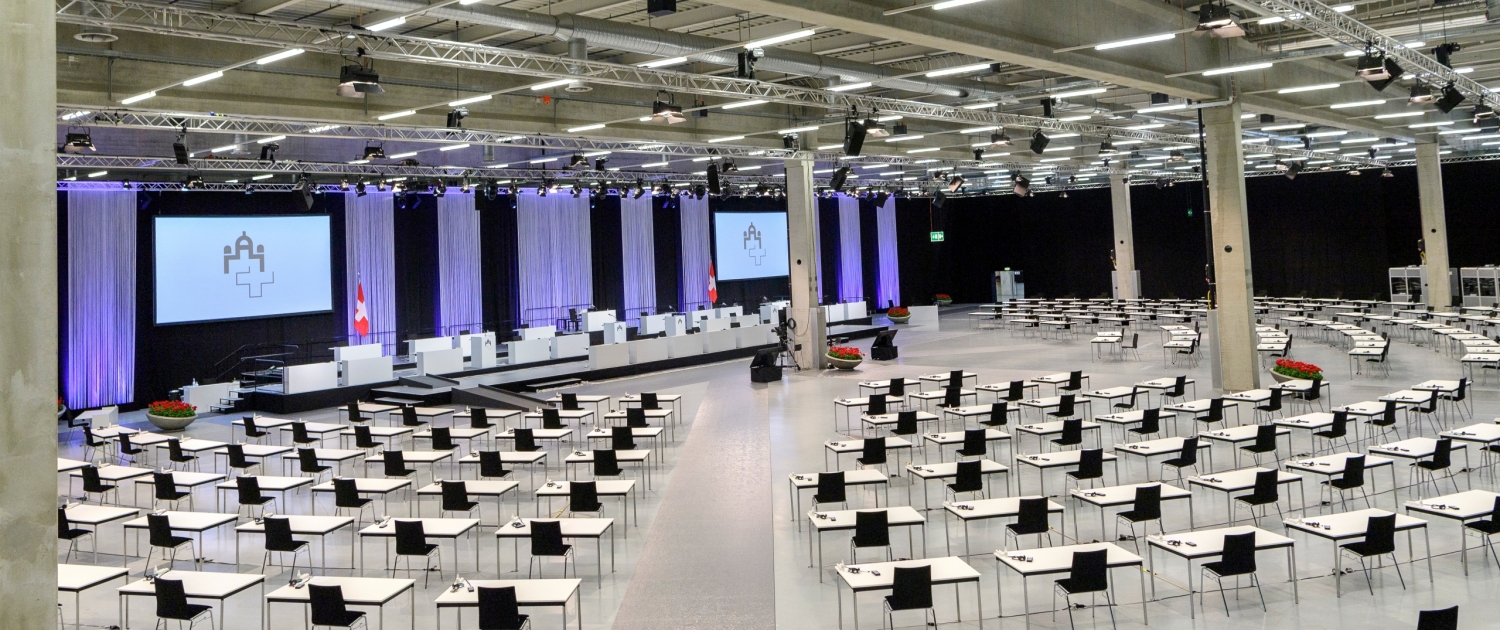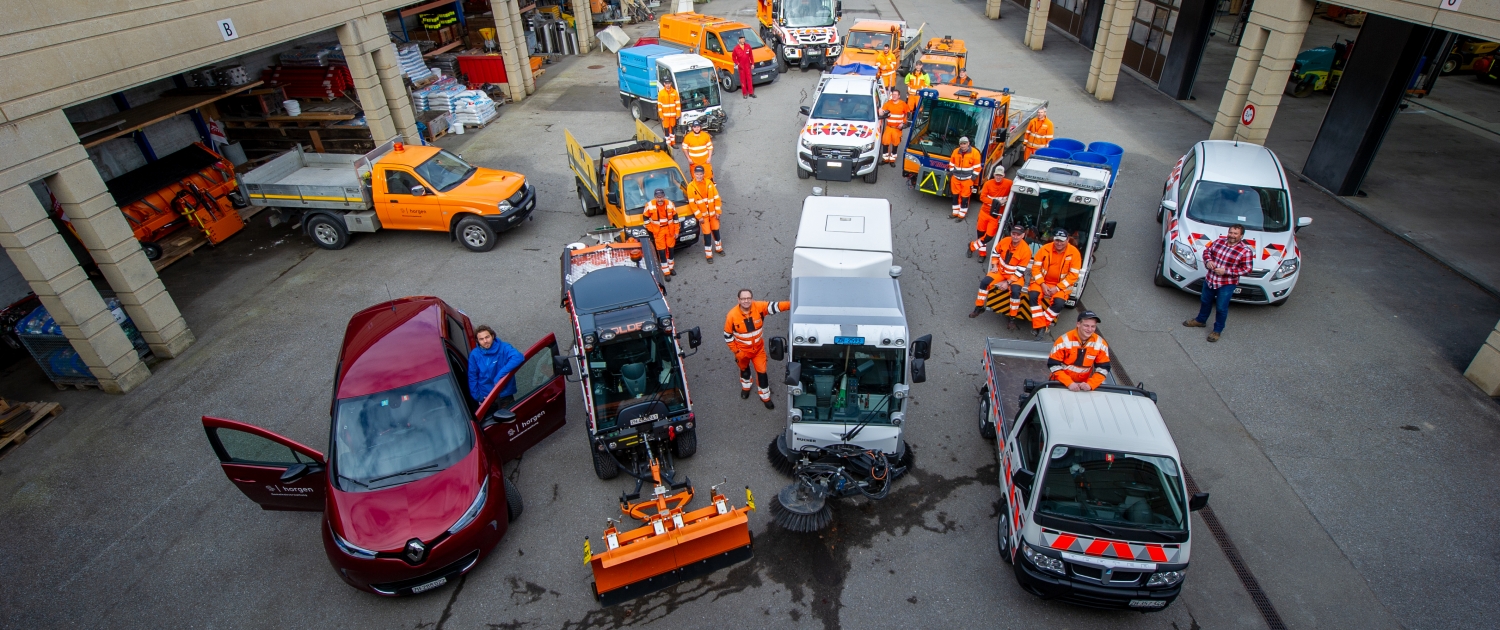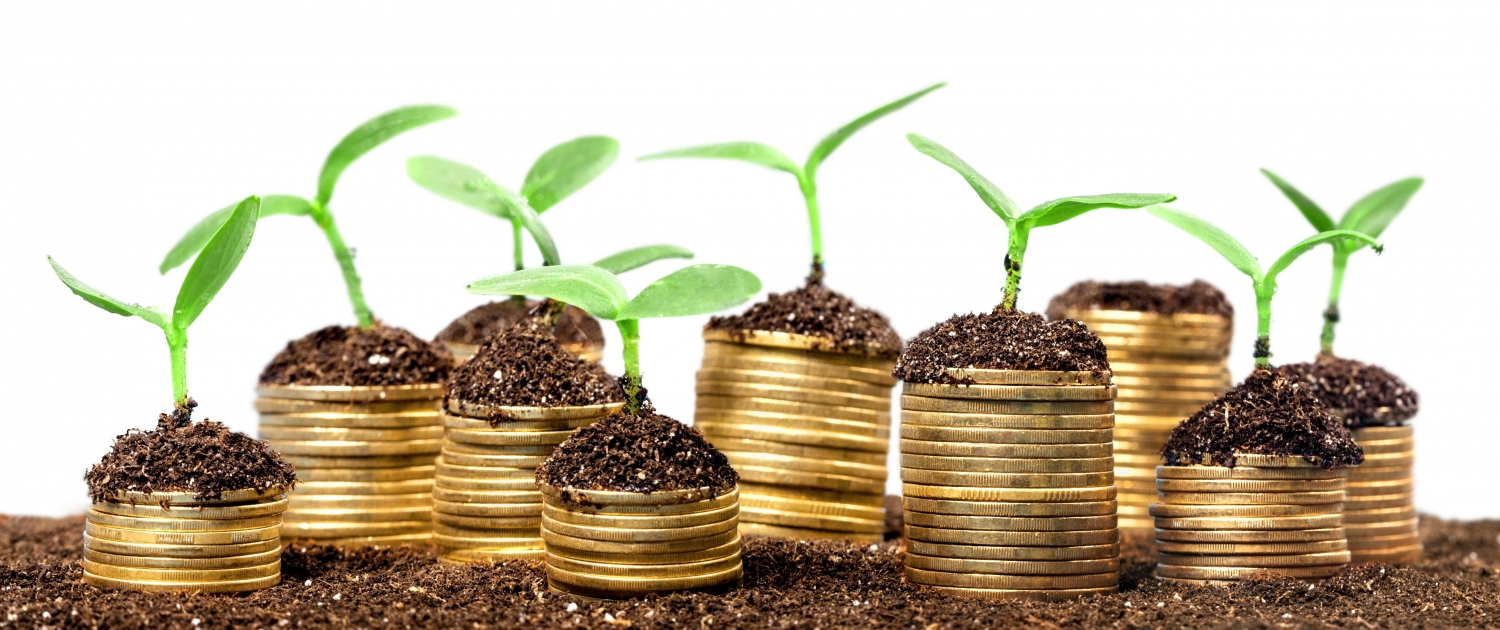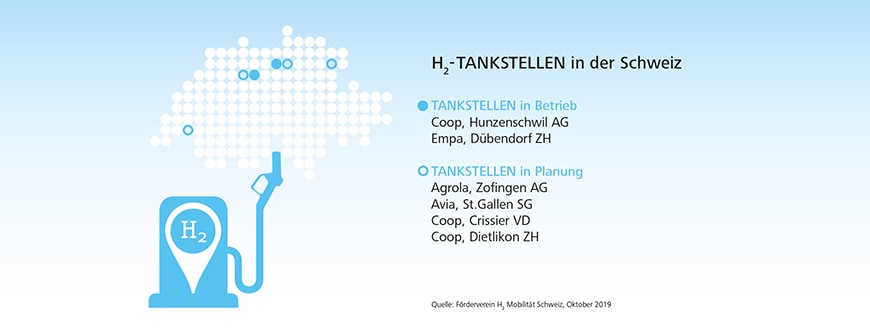Nachdem National- und Ständerat wegen der Corona-Pandemie die Frühjahrssession in der dritten Woche abgebrochen hatten, steht die diesjährige Sommersession vor der Türe. Vom 2. bis zum 19. Juni 2020 tagt das Parlament in den Hallen des Berner Messegeländes und wird sich unter anderem den Energiegeschäften annehmen, die in der Frühjahrssession nicht mehr behandelt werden konnten. Neben sieben Vorstössen stehen auch das Geschäft zum Förderungsinstrument SWEET (Swiss Energy Research for the Energy Transition) sowie die Totalrevision des CO2-Gesetzes auf dem Programm. Weiterlesen
Schlagwortarchiv für: Energy
Unser Energiesystem verändert sich: Dezentrale Energieproduktion, digitale Prozesse und Anwendungen sowie die Umstellung von fossilen auf erneuerbare Energieträger bringen viel Dynamik in die Branche. Ausdruck davon ist eine äusserst lebendige Schweizer Energie-Startup-Szene. Die Swiss Energy Startup Map 2020, ein Gemeinschaftsprojekt des Instituts für Innovation & Entrepreneurship der ZHAW und von Swisspower, zeigt rund 250 Unternehmen aus dem Energiebereich, die innerhalb der letzten 10 Jahre gegründet wurden. Weiterlesen




 2 Vote(s), Durchschnitt: 2,50
2 Vote(s), Durchschnitt: 2,50Wie der Strom effizienter umgewandelt werden kann
Computer, Kühlschrank, Netzgerät oder Energiesparlampe: Ohne Halbleiter würden sie nicht funktionieren. Halbleiter bestehen aus chemischen Verbindungen, die den Strom transportieren. Der Klassiker sind Silizium-Halbleiter. Studien zeigen nun: Es gibt Alternativen, die effizienter sind. Weiterlesen




 1 Vote(s), Durchschnitt: 5,00
1 Vote(s), Durchschnitt: 5,00Seit 2014 schickt Horgen (ZH) alle Mitarbeitenden, die beruflich Gemeindefahrzeuge lenken, regelmässig in den EcoDrive-Kurs. Das schont nicht nur die Umwelt und das Klima, sondern auch die Gemeindekasse. Weiterlesen




 1 Vote(s), Durchschnitt: 5,00
1 Vote(s), Durchschnitt: 5,00Einen Monat nachdem der Bundesrat das Förderprogramm SWEET (SWiss Energy research for the Energy Transition) verabschiedet hat (vgl. Energeiaplus-Beitrag), wurde der erste Meilenstein erreicht: Die Konsultationsphase ist abgeschlossen. In einer ersten Ausschreibung forderte das Bundesamt für Energie (BFE) Inputs für mögliche Forschungsthemen an, dies unter dem Leitthema «Integration erneuerbarer Energien in ein nachhaltiges und resilientes Schweizer Energiesystem». Weiterlesen




 Noch keine Bewertungen
Noch keine BewertungenLe programme EU4Energy soutient 11 pays voisins d’Europe, du Caucase et d’Asie centrale dans leurs efforts pour développer une politique énergétique sûre et durable, en collaboration avec l’Agence internationale de l’énergie (AIE). C’est dans ce cadre que la politique énergétique de l’Azerbaïdjan a été soumise à un audit approfondi, similaire à celui que conduit l’AIE auprès de ses pays membres. Weiterlesen




 Noch keine Bewertungen
Noch keine BewertungenNeben der weitläufig bekannten batteriebetriebenen Elektromobilität gilt auch der Brennstoffzellenantrieb als vielversprechende Alternative, um die CO2-Emissionen im Verkehr zu reduzieren.
Trotz des ersten Serienmodells eines Brennstoffzellen-Fahrzeugs aus dem Jahr 2013 war es aufgrund von fehlenden Wasserstoff-Tankstellen zeitweise schwierig, ein solches Auto in der Schweiz zu fahren. Dies änderte sich 2016, als die Empa zusammen mit den Industriepartnern H2 Energy und Hyundai im Rahmen eines Pilotprojekts die beiden schweizweit ersten öffentlichen Wasserstoff-Tankstellen baute. Weiterlesen




 3 Vote(s), Durchschnitt: 3,33
3 Vote(s), Durchschnitt: 3,33General overview
China is both the world’s biggest clean energy investor and the world’s largest CO2 emitter. It is on track to becoming the world’s renewable energy superpower: China is the world’s largest producer, exporter and installer of solar panels, wind turbines, batteries and electric vehicles.
Even though renewable energy investments declined from $122 billion in 2017 to $86 billion in 2018, China still has by far the largest capacity. It also has a clear lead in terms of the underlying technology, with well over 150,000 renewable energy patents as of 2016, 29% of the global total. The next closest country is the U.S., which had a little over 100,000 patents, with Japan and the E.U. having close to 75,000 patents each.
The share of non-fossil fuels in China’s total electricity mix is on course to hit 32-34% in 2020. With increasing demand, China added about 40 GW of solar and 40 GW of coal in 2019. There is a lot of room for renewable energy, since coal’s share in China’s primary energy mix was still 58% in 2018 and electricity demand keeps growing. Weiterlesen




 4 Vote(s), Durchschnitt: 4,75
4 Vote(s), Durchschnitt: 4,75Sur l’ensemble de l’année 2017, la Suisse a consommé 58,5 TWh d’énergie électrique, dont environ 7 TWh (environ 12 %) ont été utilisés pour l’éclairage. Douze acteurs importants du domaine de l’éclairage ont signé, en 2018, une convention qui a pour objectif la mise en place de mesures qui permettent de diminuer de 50% la consommation de l’éclairage dans le parc immobilier suisse d’ici 2025. L’accent est mis sur les mesures de planification de la lumière du jour, la bonne planification du système d’éclairage ainsi que la mise en service professionnelle des détecteurs de mouvement et des capteurs de lumière du jour. (Lire l’article) Depuis cette rencontre, les partenaires initiaux et une douzaine de nouveaux ont créé le programme energylight. Weiterlesen




 1 Vote(s), Durchschnitt: 5,00
1 Vote(s), Durchschnitt: 5,00Taiwan’s energy system is currently facing an enormous transformation with ambitious goals for 2025 to promote renewables, phase-out nuclear power, diminish the use of coal and to foster energy efficiency. Taiwan is heavily industrialized, the electricity production is based on fossil fuels and nuclear power, and the per capita CO2-emissions are rather high (see box “key facts on Taiwanese energy policy” below). In 2016, the government of Taiwan defined the strategic goal of its Energy Transition Policy: The goal stated to become nuclear-free by 2025. Also by 2025, the electricity production portfolio shall consist of 50 percent gas, 30 percent coal and 20 percent renewables. Thus, the installed capacity of renewables shall more than quadruple within less than ten years. These goals are crucial not only to phase-out nuclear power, but also to attain climate policy goals. Is Taiwan likely to succeed in reaching the goals for renewables, and what is their approach to foster energy efficiency?
According to Taiwan’s goal, renewables shall account for 20 percent of the electricity production by 2025 – compared to less than 2 percent in 2016. The government set the goal of installing a capacity of 20 GW of photovoltaics and of 5.5 GW of offshore wind power by 2025. In addition, hydro, biomass, onshore wind and, to a lesser extent, geothermal and fuel cells shall be developed, too. This is an ambitious increase in capacity installed within a short period of time (for comparison: Switzerland currently has roughly about 1.2 to 1.4 GW installed PV and wind energy). Yet, the Taiwanese goals for renewables seem to be within reach:
- The Taiwan Strait, the sea west of the main island, has great wind resources. Taiwan has positioned itself as an entry point for offshore wind developers to conquer a growing Asian market. Among others, wind developers have to incorporate the local supply chain. It is estimated that the new offshore-wind business might create around 30’000 jobs. As of 2019, offshore wind farm developers have already been selected through feed-in tariffs and auctioning for a capacity of 5.5 GW. This process was not always smooth and precise remuneration has been subject to change and negotiation. However, it now seems likely that these capacities are going to be developed. Guaranteed prices amount to somewhere between USD 0.1-0.2 / kWh, varying for projects and depending on the number of hours of production per year.
- Taiwan is famous for its electronic industry and semiconductor production. From a technical point of view, it was therefore a small step to develop one of the biggest global photovoltaics industries. On a global level, companies in Taiwan are the second-biggest producers of solar cells and solar modules. Fostering solar energy in Taiwan is thus a chance for the local economy, too. Sunshine resources are abundant, particularly in the southern region. The government set goals to develop solar energy within a short time, with an emphasis on ground level (17 GW by 2025) as well as on rooftops (3 GW). So far, the yearly additionally installed solar power capacity is on track to reach the 2025 target. As in other places, feed-in tariffs were used and then reduced over time (from up to USD 0.45 to 0.1 / kWh). In addition, the system was optimized through a bidding process for projects over 10 kW in 2011.
Energy efficiency is addressed by a wide array of regulation, incentives and further measures. Whereas energy consumption and CO2-emissions are still growing from year to year, the growth has been decoupled from the overall economic growth. Thus, progress has been made in decreasing energy intensity. It is not possible to name all measures taken, but what follows highlights a few: in energy intensive industries, regulations on energy intensity targets and minimum energy performance standards for appliances have been introduced. Furthermore, combustion engine cars will be banned by 2040 and motorcycles by 2035. Taiwan has no significant car industry, but is an important producer of electrical motorcycles. The ban is also seen as a measure to increase the integration of renewables in the energy system, as parked vehicles can be used for storage. The Green Building Labeling System sets an incentive to use green materials and efficient cooling by imposing a minimum standard for new buildings and allowing a higher floor area ratio for particularly green buildings. There is also a tradition of creating innovative research and development clusters, such as through the Industrial Technology Research Institute or Shalun Smart Green Energy Science City. However, as elsewhere, many challenges remain, among them the existing building stock as well as medium and small enterprises.
Overall, the ambitious goals for renewables are rather likely to succeed, given the existing natural resources, the political will, the financial means invested, and thanks to solar power and wind energy becoming big business opportunities. As in many places around the world, energy efficiency is more difficult, relies on a broad set of measures that address different sectors, which although, to some degree, also create business opportunities. It will be interesting to follow how Taiwan will further tighten measures in order to reach long-term climate policy goals, how this will affect local business and, last but not least, how it will shape the energy policy beyond 2025.
Kurt Bisang, Deputy Head of Energy Efficiency and Renewables Division, SFOE
The author visited several public entities, research institutes and companies in Taiwan in late fall 2019.
Key facts on Taiwanese energy policy: With a dense population of 24 million people and as an island with almost no own sources of fossil fuels, Taiwan’s power supply system relies for over 98 percent on import. Fossil energy sources are dominant both in the overall energy mix (92 percent), and in electricity generation (84 percent). CO2-emissions stem to an important part from the industrial sector (49 percent), followed by electricity generation, transportation and the residential sector. Given the industrialized economy and an electricity production that is based on fossil fuels, 12t of CO2 are emitted per capita (all numbers as of 2018). In 2015, Taiwan set the goal to reduce its greenhouse gas emissions by 50 percent until 2050 (compared to the 2005 level). A major climate policy measure is substituting coal power, currently amounting to 48 percent of electricity generation, by gas. Terminals for liquefied natural gas are extended.An important issue is the electric industry reform. Since 1946, electricity was provided by the state-owned, vertically integrated Taiwan Power Company (Taipower). Since 1994, independent power producers were entitled to provide a limited share of electricity. In the next years, Taipower is going to be separated into a power generation and a power grid company.
An important point is the role of nuclear energy in Taiwan. In 1990, three nuclear power plants with two blocks each produced more than 50 percent of electricity in Taiwan. With growing demands, this sunk to 20 percent around 2002. Currently, two plants are still running, that produce around 10-15 percent of electricity used in Taiwan. Nuclear energy has been controversial in Taiwan for years. The construction of a forth nuclear plant was stopped in 2014, mainly due to public protest. From 2016 onward, the ruling political party decreed to phase-out nuclear power plants by 2025. In a public referendum in 2018, the majority of voters repealed this fixed date for the phase-out. However, in early 2019, the government argued that given various problems related to procedures, unresolved treatments of radioactive waste and lack of local support, neither a life-extension of existing plants nor finishing the construction of the forth plant would be feasible.




 3 Vote(s), Durchschnitt: 5,00
3 Vote(s), Durchschnitt: 5,00Kontakt
Bundesamt für Energie
Pulverstrasse 13
3063 Ittigen
Postadresse:
Bundesamt für Energie
3003 Bern
Telefonnummern:
Hauszentrale +41 58 462 56 11
Pressestelle +41 58 460 81 52
 Béatrice Devènes
Béatrice Devènes Swisspower
Swisspower Shutterstock
Shutterstock VSC Schweiz
VSC Schweiz Shutterstock
Shutterstock OFEN
OFEN Förderverein H2 Mobilität Schweiz
Förderverein H2 Mobilität Schweiz Swissnex China
Swissnex China BFE
BFE Kurt Bisang
Kurt Bisang